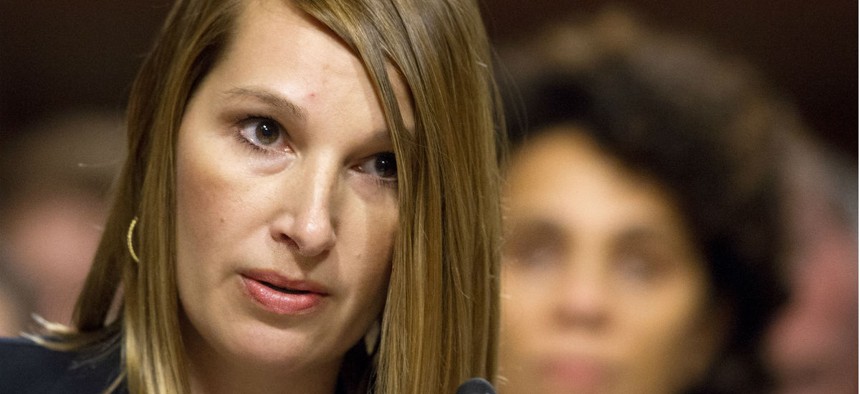
Heather Higginbottom, then deputy secretary of management and resources at the State Department, testifies on Capitol Hill in 2014. AP file photo
Trump Seems Keen on Revamping State Department Management
The nomination of John Sullivan would combine two jobs Obama had filled separately.
The White House announcement on April 11 that President Trump is nominating attorney and multi-agency veteran John J. Sullivan as deputy secretary of State contained an unusual twist.
Not only would Sullivan, who has held senior legal positions at the Defense, Justice and Commerce departments, be No. 2 at State under Rex Tillerson, he would “serve concurrently and without additional compensation as deputy secretary of State for management and resources.”
The management position, created in 2000, was vacant during the George W. Bush administration. President Obama, after tapping Hillary Clinton as his first secretary of State, filled the post first with Jack Lew (who went to become Obama’s Treasury secretary), then Thomas Nides (who left in 2013 to return to Morgan Stanley) and Heather Higginbottom (who stayed through Obama’s presidency and is now running the global aid group CARE).
A good portion of State’s management duties during the past decade were handled by a career Foreign Service officer, Undersecretary of State for Management Patrick Kennedy. He became entangled in both the Benghazi and the private email server controversies that unfolded during Clinton’s tenure, and he was among several management specialists who resigned abruptly this January.
The State Department was unique among Cabinet departments in having two deputy secretaries, both “alter egos” to the secretary, as the department’s website calls them.
The White House did not respond to queries for elaboration on the plan to combine the two jobs for Sullivan, who from 2010-2016 chaired the advisory committee called U.S.-Iraq Business Dialogue.
The proposal was applauded by Amb. Ron Neumann, who served as U.S. envoy in Afghanistan and now leads the American Academy of Diplomacy. “I didn’t think that job was ever needed, and we did fine without it for years,” he told Government Executive on Friday.
He stressed that he met with both Nides and Higginbottom and found no fault with them, “but her job, frankly, was duplicatory,” he said, noting that the Defense Department, a much larger organization, has functioned with only one deputy secretary. His academy in 2015 published a report, “American Diplomacy at Risk,” that called for reducing the number of high-level State officials.
Opinions differ, Neumann added, “but policy involves budgets and management—they’re not separate. There’s something artificial about separating them.” Also, several people still working at State, he said, told him many working papers ended up being circulated to staffs for both deputy secretaries before being presented to the agency head.
Neither Nides nor Higginbottom responded to queries.







